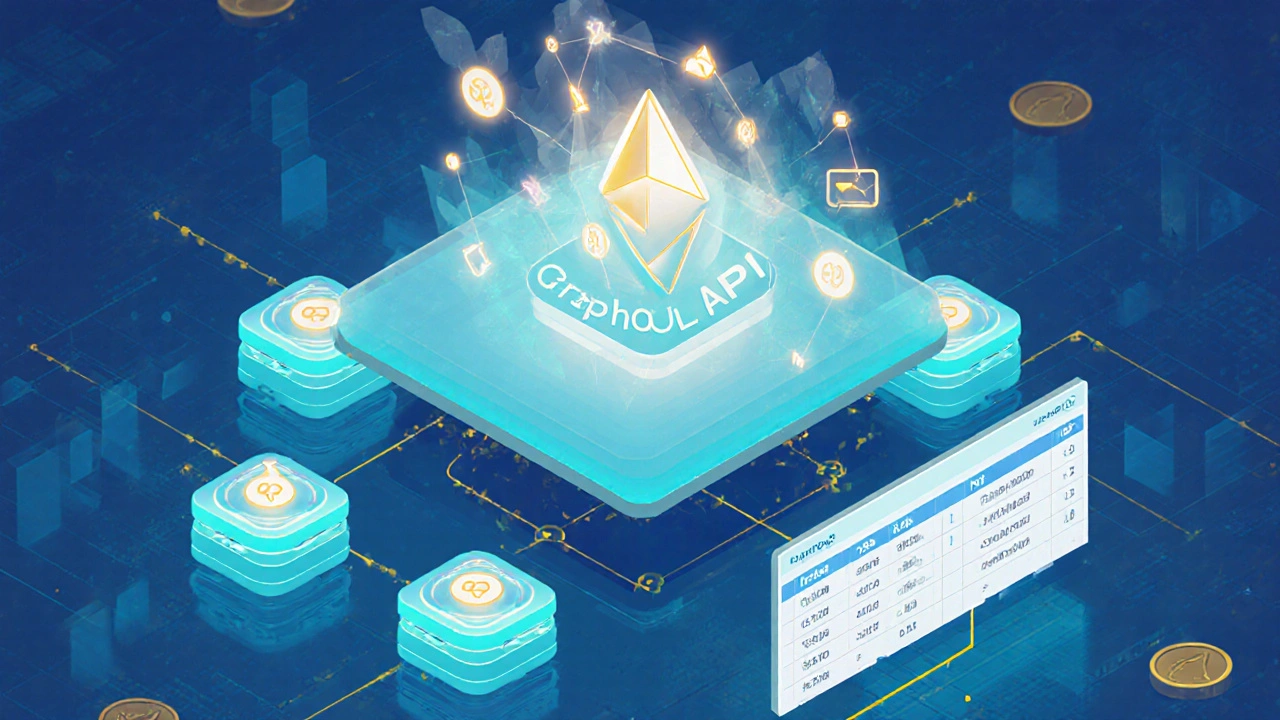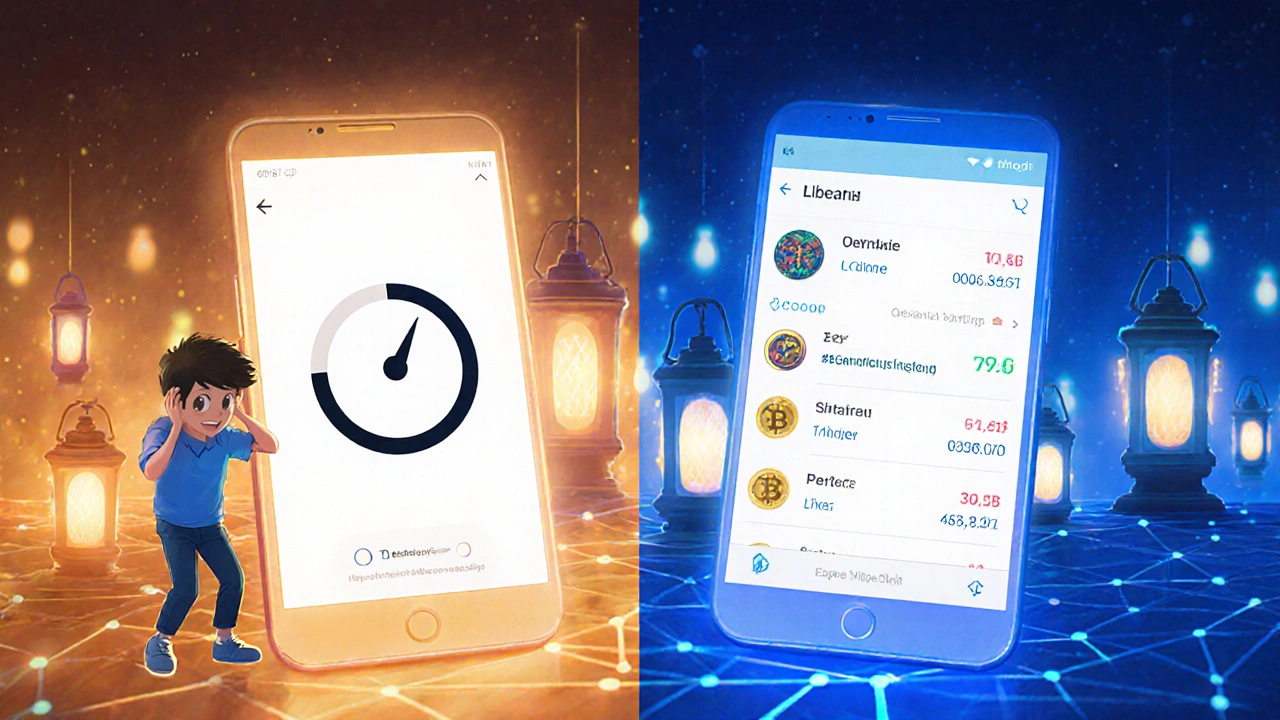Imagine trying to find every time someone sent an NFT on Ethereum. You’d need to scan every single block, check every transaction, filter out the noise, and piece together who owns what. It’s like searching for one specific book in every library on Earth-by hand. That’s what developers had to do before The Graph.
Why Ethereum Data Is Hard to Query
Ethereum stores all transaction data publicly. That’s great for transparency. But it’s terrible for speed. Smart contracts emit events-like a token transfer or an NFT sale-but there’s no built-in way to ask, “Show me all transfers of this token in the last 30 days.” You can’t run SQL queries on a blockchain. You can’t join tables. You can’t filter or sort without writing your own script that reads every block from the beginning. That’s where the problem hits. A dApp trying to show a user their NFT collection? If it pulls data directly from Ethereum nodes, it might take 15 to 20 seconds to load. That’s not just slow-it’s unusable. Users leave. Projects fail. Enter The Graph. It’s not a new blockchain. It’s not a wallet. It’s the indexing layer that makes Ethereum data usable.What Is The Graph?
The Graph is a decentralized protocol that turns raw blockchain data into structured, queryable APIs. Think of it as Google for Ethereum. You don’t need to crawl the entire chain to find what you need. You just ask for it-using GraphQL. Developers don’t build custom backends anymore. Instead, they create subgraphs. These are open, reusable APIs that describe exactly which data to pull from which smart contracts. Once deployed, The Graph’s network of nodes-called indexers-continuously scans Ethereum, processes events, and stores the data in a way that’s fast to query. The result? A dApp can fetch a user’s entire trading history in under a second. No more polling RPC endpoints. No more timeouts. Just clean, reliable data.How Subgraphs Work
A subgraph is made of three core parts: a manifest, a schema, and mappings. The manifest (a YAML file) tells The Graph: “Watch this contract address. Listen for these events. When they happen, run this code.” For example:- Contract: 0x... (Uniswap V2)
- Event: Transfer(indexed address, indexed address, uint256)
- Handler: handleTransfer
- User (address, totalTrades)
- NFT (id, owner, tokenURI)
- Trade (id, token, amount, timestamp)

Who Runs The Graph?
The Graph isn’t owned by one company. It’s a decentralized network with three roles:- Indexers: Node operators who stake GRT (The Graph’s token) to index subgraphs. They earn query fees and rewards.
- Curators: Users who stake GRT to signal which subgraphs are valuable. High signal = more indexing rewards.
- Delegators: People who don’t run nodes but stake their GRT with trusted indexers to earn a share of rewards.
Real-World Impact
You’re probably already using The Graph without knowing it. Uniswap uses 12 subgraphs to power its interface. Aave uses 8. Curve, OpenSea, LooksRare-all rely on it. Without The Graph, these platforms couldn’t show you your portfolio, your trading history, or your NFT collection in real time. One developer migrated an NFT marketplace from direct RPC calls to The Graph. Load times dropped from 20 seconds to under 2 seconds. Another team needed to analyze 50,000+ Uniswap trades. With direct queries, it took 3 hours. With The Graph? 8 minutes. Even big players like Alchemy and Infura offer similar indexing-but they’re centralized. If their service goes down, your app breaks. The Graph? If one indexer fails, another picks up the slack. It’s censorship-resistant. It’s resilient.
The Learning Curve
It’s not easy to get started. You need to understand:- How Ethereum events work (Transfer, Approval, Mint, etc.)
- How to write a GraphQL schema
- AssemblyScript-what it is, how it compiles to WebAssembly
- Entity relationships (how to link users to NFTs, trades to tokens)
What’s Next for The Graph?
The Graph is expanding beyond Ethereum. It now indexes data from Polygon, Arbitrum, Optimism, Solana, and 11 other chains. Ethereum still makes up 68% of deployments, but the trend is clear: cross-chain indexing is the future. In 2023, The Graph Foundation launched a $25 million fund to support subgraph development on new chains. They’re also preparing to shut down their centralized Hosted Service by Q2 2024. After that, all subgraphs must run on the decentralized network. Upcoming features include SP1 integration-zero-knowledge proofs that let users verify data without trusting the indexer. This could make The Graph even more secure and privacy-preserving.Should You Use It?
If you’re building a dApp that needs to show historical data-token balances, trade history, NFT ownership, DAO votes-then yes. The Graph isn’t optional anymore. It’s infrastructure. If you’re just experimenting with smart contracts and only need to read the latest state? Maybe skip it. Use direct RPC calls. But if you plan to scale, add analytics, or build dashboards? Start with The Graph. The upfront work pays off fast. The alternative? Building and maintaining your own indexing service. That’s expensive. It’s fragile. It’s not decentralized. And it doesn’t scale. The Graph doesn’t just make data easier to access. It makes Web3 applications possible at scale.What is The Graph used for?
The Graph is used to index and query data from blockchains like Ethereum. It lets developers build decentralized apps (dApps) that can quickly retrieve historical data-like token transfers, NFT ownership, or trading history-without scanning every block manually. It turns raw blockchain data into fast, reliable GraphQL APIs.
What is a subgraph?
A subgraph is a defined set of rules that tells The Graph which blockchain events to track and how to turn them into structured data. It includes a manifest (what to watch), a GraphQL schema (how the data is organized), and mapping code (how to process events). Each subgraph creates a public API for querying specific data-like all trades on Uniswap or all NFT transfers for a collection.
Do I need to know AssemblyScript to use The Graph?
Yes, for creating custom subgraphs. AssemblyScript is used to write mapping functions that process blockchain events and update data entities. It’s similar to TypeScript and compiles to WebAssembly. While The Graph Studio simplifies some steps, writing logic for complex data relationships still requires AssemblyScript knowledge.
Is The Graph decentralized?
Yes. The Graph runs on a decentralized network of indexers who stake GRT tokens to provide indexing services. Curators signal quality, delegators support indexers, and the system punishes bad behavior by slashing stakes. This makes it resistant to censorship and single points of failure-unlike centralized services like Alchemy or Infura.
What happens if The Graph’s Hosted Service shuts down?
All subgraphs must migrate to the decentralized network by Q2 2024. The Hosted Service is being phased out to push developers toward the fully decentralized protocol. If you’re using the hosted version now, you’ll need to deploy your subgraph to the decentralized network using The Graph CLI or Studio to keep your dApp running.
How does The Graph compare to Alchemy or Infura?
Alchemy and Infura offer similar indexing tools, but they’re centralized. If their servers go down, your app breaks. The Graph is decentralized-data is served by hundreds of independent nodes. It’s slower to set up, but more resilient. For production dApps that need uptime and censorship resistance, The Graph is the better long-term choice.
Can I index data from contracts that don’t emit events?
Yes, but it’s harder. The Graph is optimized for event-based indexing. For contracts without events, you’d need to use block scanning-reading every block and checking contract storage manually. This is slower, more expensive, and not recommended unless absolutely necessary. Always design smart contracts with events if you plan to use The Graph.
How much does it cost to use The Graph?
There’s no direct fee to query subgraphs. Indexers earn query fees from dApps, but most dApps cover those costs. For developers, deploying a subgraph is free. However, if you want to curate or stake GRT to influence indexing, you’ll need to hold and stake tokens. The cost is tied to the economic model, not usage volume.


10 Responses
The Graph is not a magic bullet. It's a necessary abstraction layer that developers should understand before relying on it blindly. Many treat it like a black box, but without understanding the underlying event schema and mapping logic, you'll end up with corrupted data or inefficient queries. If you're building production dApps, you owe it to your users to learn how the indexing actually works-not just copy-paste a subgraph from GitHub.
Ugh. Another ‘decentralized’ solution that’s just a fancy API wrapper. If you need a GraphQL endpoint to read blockchain data, you’re already off the rails. Real Web3 means direct node access or nothing. The Graph is just Wall Street’s attempt to make crypto feel like Bloomberg Terminal. And don’t get me started on GRT tokens-more speculation disguised as infrastructure.
Great breakdown. The Graph has become essential infrastructure-like HTTP for the web. I’ve migrated three dApps to it, and the difference in reliability and load times is night and day. Highly recommend starting with The Graph Studio for beginners. The docs are excellent, and the community is supportive.
I’ve spent the last six months building subgraphs across Ethereum, Polygon, and Solana, and I can say without hyperbole that The Graph is one of the most elegant solutions I’ve encountered in Web3. It doesn’t just solve a technical problem-it redefines what’s possible in decentralized application design. The fact that curators and indexers are economically aligned to serve quality data is genius. This isn’t just indexing; it’s a new layer of decentralized trust. And yes, AssemblyScript is a hurdle, but once you get past it, the freedom to query complex relationships in real time is worth every hour of frustration. The future isn’t just cross-chain-it’s cross-protocol, and The Graph is already there.
So now we’re paying people to index data that’s already public? Brilliant. Let’s just add another middleman layer and call it ‘decentralized.’ Meanwhile, real devs are still stuck debugging why their subgraph didn’t pick up a Transfer event because someone forgot to mark the address as indexed. And don’t even get me started on the 3-hour deploy times before Studio. This whole thing feels like a corporate PR stunt dressed up as open source.
Who even needs this? I mean really. You want to know who owns an NFT? Just look at the blockchain. Why do we need another fucking API to do what a simple script could do? The Graph is just a glorified cache for people too lazy to learn how Ethereum works. And now they’re charging people to stake GRT? Like, wow. Just wow. I’m out.
This is the quiet revolution nobody talks about. We’re not just indexing data-we’re building the foundation for a new kind of internet where data is owned, not leased. The Graph turns raw blockchain chaos into meaningful stories. Every trade, every transfer, every NFT movement becomes part of a living archive. And it’s not just about speed-it’s about dignity. People deserve to see their history without waiting 20 seconds. This isn’t tech. This is culture. And it’s just getting started.
I’ve been using The Graph for over a year now, and I still find myself amazed at how much it simplifies development. I remember when I first tried to pull all Uniswap trades for a single wallet-it took my script 47 minutes to run and crashed twice. Now, with a subgraph, I get the same data in under a second. The learning curve is real, especially with AssemblyScript and entity relationships, but the tools have improved so much. The Graph Studio’s schema visualizer alone saved me days. And the fact that the network is decentralized means I don’t have to worry about my dApp breaking because some company’s server went down. It’s not perfect, but it’s the closest thing we have to a universal data layer for Web3-and I’m genuinely excited to see where it goes next.
Just a quick note: if you’re new to subgraphs, always double-check your event signatures. I spent two days debugging because I used 'Transfer(address,address,uint256)' instead of 'Transfer(indexed address,indexed address,uint256)'. The indexed fields are critical for filtering. Also, use the Graph CLI to test locally before deploying. Saves headaches.
Oh, so now we’re turning blockchain transparency into a paid subscription service? How very corporate. You built a decentralized protocol to make querying data easier… and then you made it dependent on token staking and economic incentives. That’s not decentralization-that’s complexity with a side of crypto bros. Still, I’ll admit: the 20-second load times were unbearable. So yes, The Graph works. But I’ll be watching closely to see if it becomes the very thing it claims to replace.